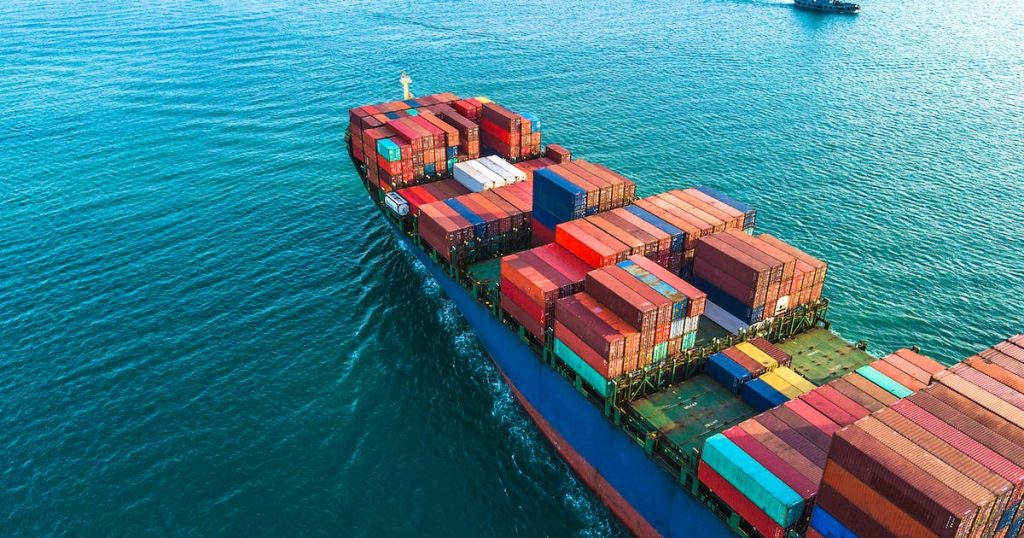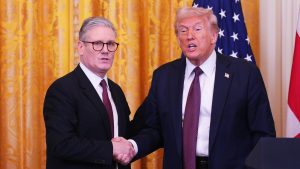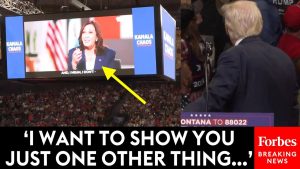
President Donald Trump said 25 percent tariffs on Canada and Mexico are on track to go into place on March 4, and said he would impose an additional 10 percent tax on Chinese imports, moves that would deepen his fight with the nation’s largest trading partners.
The president paused the sweeping duties on Canada and Mexico on Feb. 3 for one month after both countries’ leaders announced new border security measures. But the US president had recently sowed confusion about whether they would take effect once the grace period ended.
Trump said Thursday in a social media post that drugs from the US’s North American neighbours are still entering “at very high and unacceptable levels.”
“We cannot allow this scourge to continue to harm the USA, and therefore, until it stops, or is seriously limited, the proposed TARIFFS scheduled to go into effect on MARCH FOURTH will, indeed, go into effect, as scheduled,” the president wrote. “China will likewise be charged an additional 10 percent Tariff on that date.”
The new tariffs on China come on top of a previous 10 percent duty he allowed to take effect earlier this month, when he delayed tariffs on Canada and Mexico. The 25 percent tariffs apply to all Canadian and Mexican imports, except for energy products from Canada, which will be taxed at 10 percent.
“It’s 10 plus 10, a second 10,” Trump said Thursday in the Oval Office. “I think you’re going to see actually drug stopping because the countries should not be allowing the drugs to come into the United States of America. We’re not going to allow it to happen.”
Trump’s brinkmanship puts North America back on the precipice of a trade war, which economists say would hurt US growth, worsen inflation and possibly spark recessions in Mexico and Canada. Those countries plus China are the three biggest sellers to the US. If there’s no last-minute reprieve, March 4 will see taxes ramped up on well over $1 trillion of imports.
Trump’s latest tariff threat rattled financial markets. The US dollar soared on Thursday, sending Canada’s loonie, Mexico’s peso and China’s offshore yuan sliding. The S&P 500 fell 1.6 percent as investors worried about the impact of trade barriers on the economy.
Trump at a cabinet meeting on Wednesday appeared to conflate the North American tariffs, which are tied to drug trafficking and illegal migration, with separate reciprocal duties his administration has planned on nations worldwide.
“The April Second Reciprocal Tariff date will remain in full force and effect,” the president wrote on Thursday.
Trump has been disappointed thus far with the result of Canada and Mexico’s border security measures and sees most progress coming from the US side, according to a White House official who spoke on condition of anonymity to describe his thinking. The administration is now reviewing US overdose deaths as a key metric of the effectiveness of Canadian and Mexican initiatives. While Trump is bullish about enacting the tariffs, the official did not rule out the possibility of a deal prior to March 4.
Asked if he had been satisfied with the progress in the Oval Office, Trump said “not at all.”
The tariffs on China are also related to its role in the fentanyl trade. Much illegal fentanyl is manufactured abroad and smuggled into the US through Mexico, with cartels often using Chinese components to make the drug, according to the US Drug Enforcement Administration. China has dismissed the issue as a “pretext” for Trump’s tariffs.
Chinese Commerce Minister Wang Wentao wrote to US Trade Representative Jamieson Greer on Thursday to object to the tariffs.
Lobbying Effort
Trump’s announcement is sure to heighten the intensity of a lobbying effort already underway by Canada and Mexico to secure an additional reprieve. Concessions offered by Canadian Prime Minister Justin Trudeau and Mexican President Claudia Sheinbaum helped initially persuade Trump to call off the tariffs at the last minute.
Public Safety Minister David McGuinty, fentanyl czar Kevin Brosseau, Transport Minister Anita Anand and Agriculture Minister Lawrence MacAulay were among the Canadian officials who traveled to Washington this week to make the case to the Trump administration that Canada should not face tariffs. The group was expected to meet with Trump border czar Tom Homan, according to people familiar with the matter.
“We are quite convinced that the efforts we’ve made thus far should satisfy the US administration,” McGuinty said on Thursday in Washington.
Canada authorised a $901 million plan to add more resources to patrol its border with the US. Mexico agreed to send 10,000 National Guard troops to the border to help stem the flow of fentanyl and migrants.
Sheinbaum said Wednesday she could speak to Trump “if needed” amid efforts to deter him from imposing the tariffs.
Mexican and Canadian leaders have shown they’re ready for last-minute horsetrading, but they’ve also threatened to retaliate if Trump’s tariffs go ahead. “If Tuesday there are unjustified tariffs brought in on Canada, we will have an immediate and extremely strong response,” Trudeau said Thursday, reiterating his government’s plan to impose retaliatory levies on $107 billion worth of US goods.
“But we don’t want to do that,” Trudeau added. “We don’t want to have to have a commercial trade war between our two countries.”
Economic Disruption
The US, Canada and Mexico have integrated their supply chains in recent decades, from automobiles to produce, and new tariffs risk destabilising the North American trade pact Trump signed during his first term. Trade in goods and services between Canada and the US was around $920 billion in 2023, while Mexico-US trade was nearly $900 billion, according to US Commerce Department data.
Trump had for the most part treaded more carefully on China — the third-largest US trading partner — during the initial weeks of his second term, speaking his desire to reach a trade agreement with Beijing. Yet his latest pledge to tack on more tariffs risks worsening ties, along with efforts to step up investment restrictions on key products like semiconductors.
Chinese President Xi Jinping has urged his lieutenants to remain composed in the face of global challenges, a sign he’ll take a more measured approach when it comes to restrictive US policies, at least for now.
Higher consumer prices could risk political backlash for Trump, who was elected last year amid voter frustration about sticky inflation. Around 60 percent of US adults expect Trump’s tariffs will lead to higher prices and 44 percent say the levies will likely bad for the US economy — compared to 31 percent who say they’d be a boost, according to a Harris poll conducted for Bloomberg News.
The initial 10 percent tariff hike on China was expected to have only a limited effect on China’s growth in the near term, according to analysis from Chang Shu, Eric Zhu and and David Qu of Bloomberg Economics.
“But higher, permanent tariffs would bring considerable pain,” they wrote in a research report earlier this month. An increase to 60 percent would slash China’s exports to the US by almost 80 percent, putting 2.3 percent of GDP at risk in the medium term, they estimated.
By Skylar Woodhouse, Laura Dhillon Kane, Josh Wingrove and Jenny Leonard








